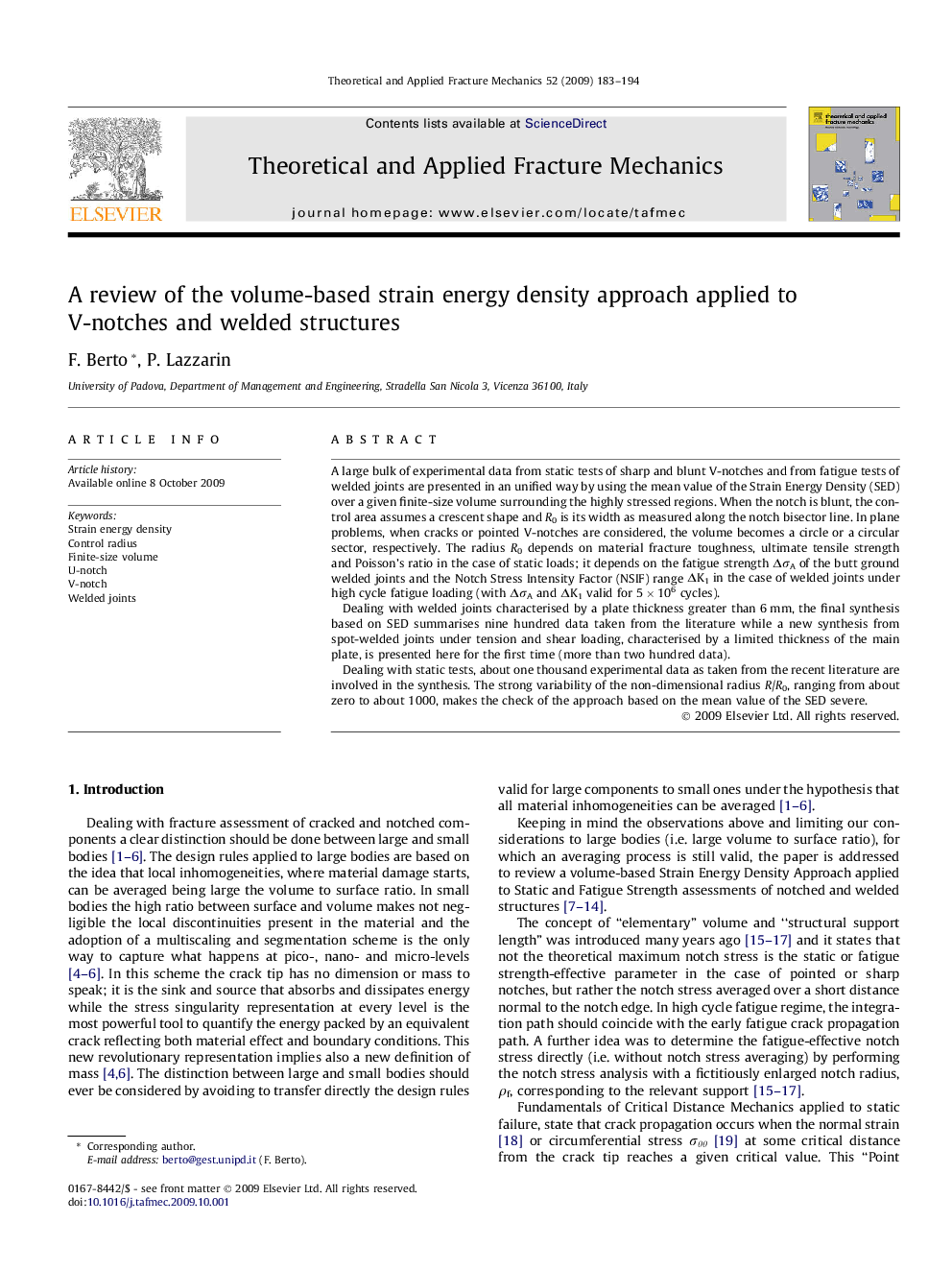| Article ID | Journal | Published Year | Pages | File Type |
|---|---|---|---|---|
| 804971 | Theoretical and Applied Fracture Mechanics | 2009 | 12 Pages |
A large bulk of experimental data from static tests of sharp and blunt V-notches and from fatigue tests of welded joints are presented in an unified way by using the mean value of the Strain Energy Density (SED) over a given finite-size volume surrounding the highly stressed regions. When the notch is blunt, the control area assumes a crescent shape and R0 is its width as measured along the notch bisector line. In plane problems, when cracks or pointed V-notches are considered, the volume becomes a circle or a circular sector, respectively. The radius R0 depends on material fracture toughness, ultimate tensile strength and Poisson’s ratio in the case of static loads; it depends on the fatigue strength ΔσA of the butt ground welded joints and the Notch Stress Intensity Factor (NSIF) range ΔK1 in the case of welded joints under high cycle fatigue loading (with ΔσA and ΔK1 valid for 5 × 106 cycles).Dealing with welded joints characterised by a plate thickness greater than 6 mm, the final synthesis based on SED summarises nine hundred data taken from the literature while a new synthesis from spot-welded joints under tension and shear loading, characterised by a limited thickness of the main plate, is presented here for the first time (more than two hundred data).Dealing with static tests, about one thousand experimental data as taken from the recent literature are involved in the synthesis. The strong variability of the non-dimensional radius R/R0, ranging from about zero to about 1000, makes the check of the approach based on the mean value of the SED severe.
